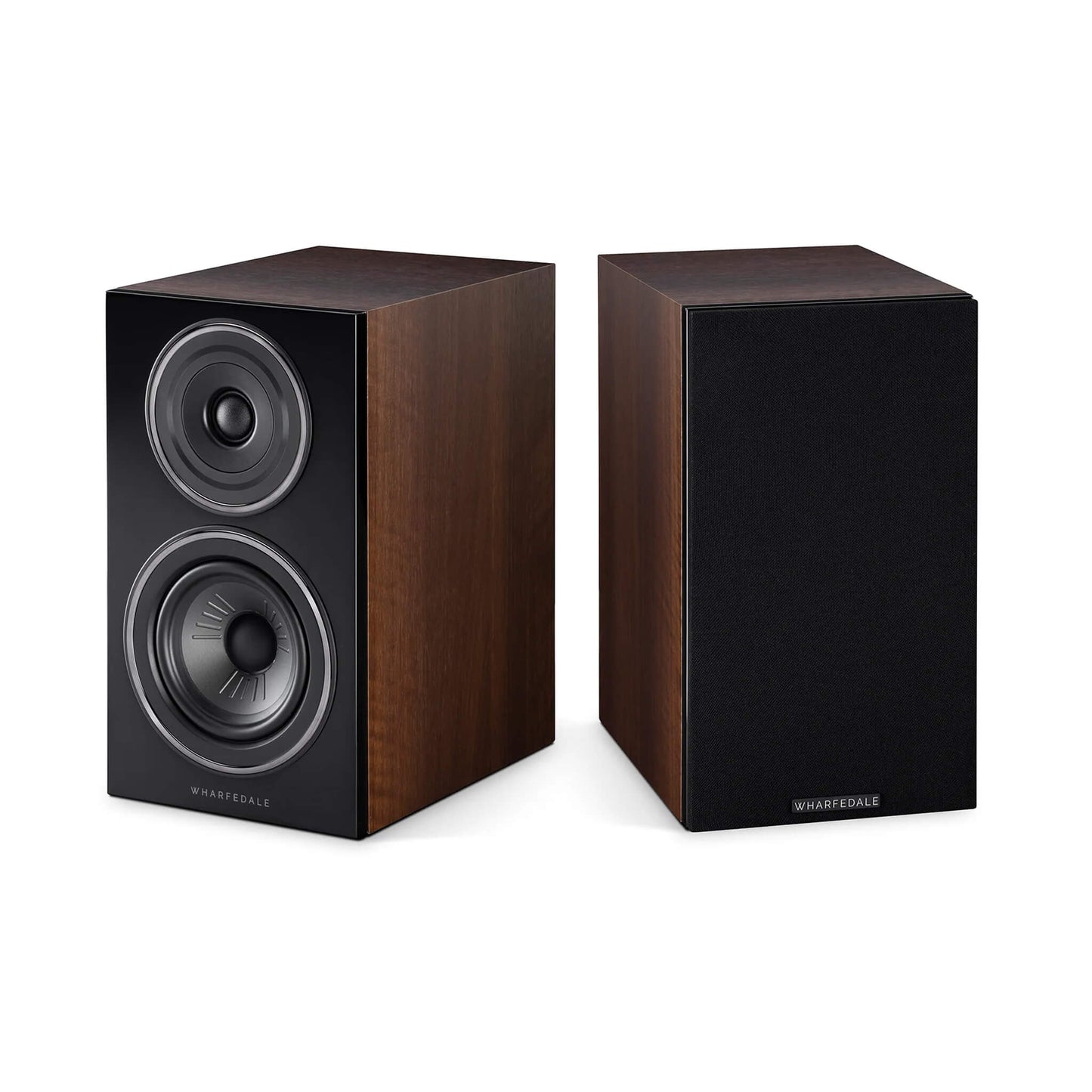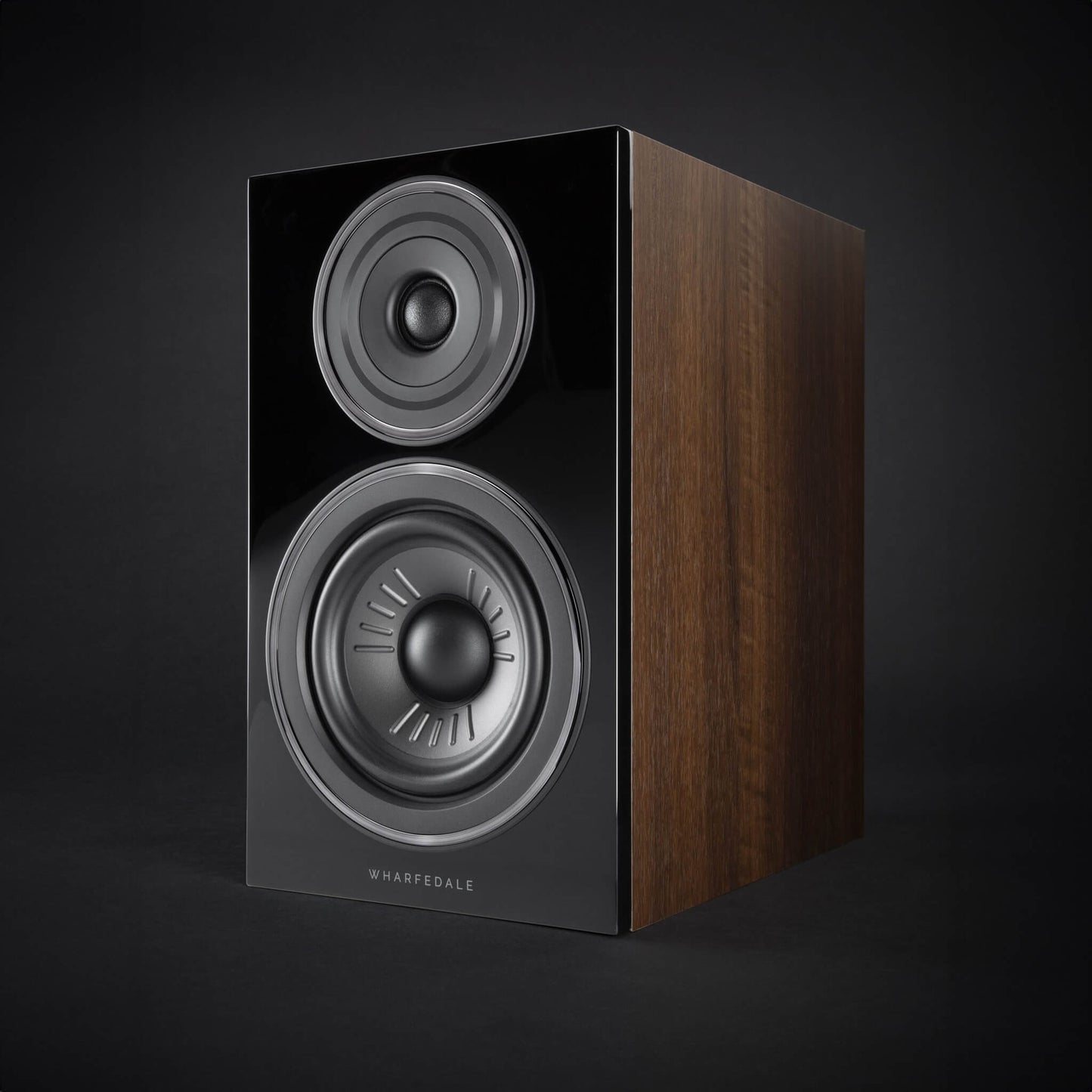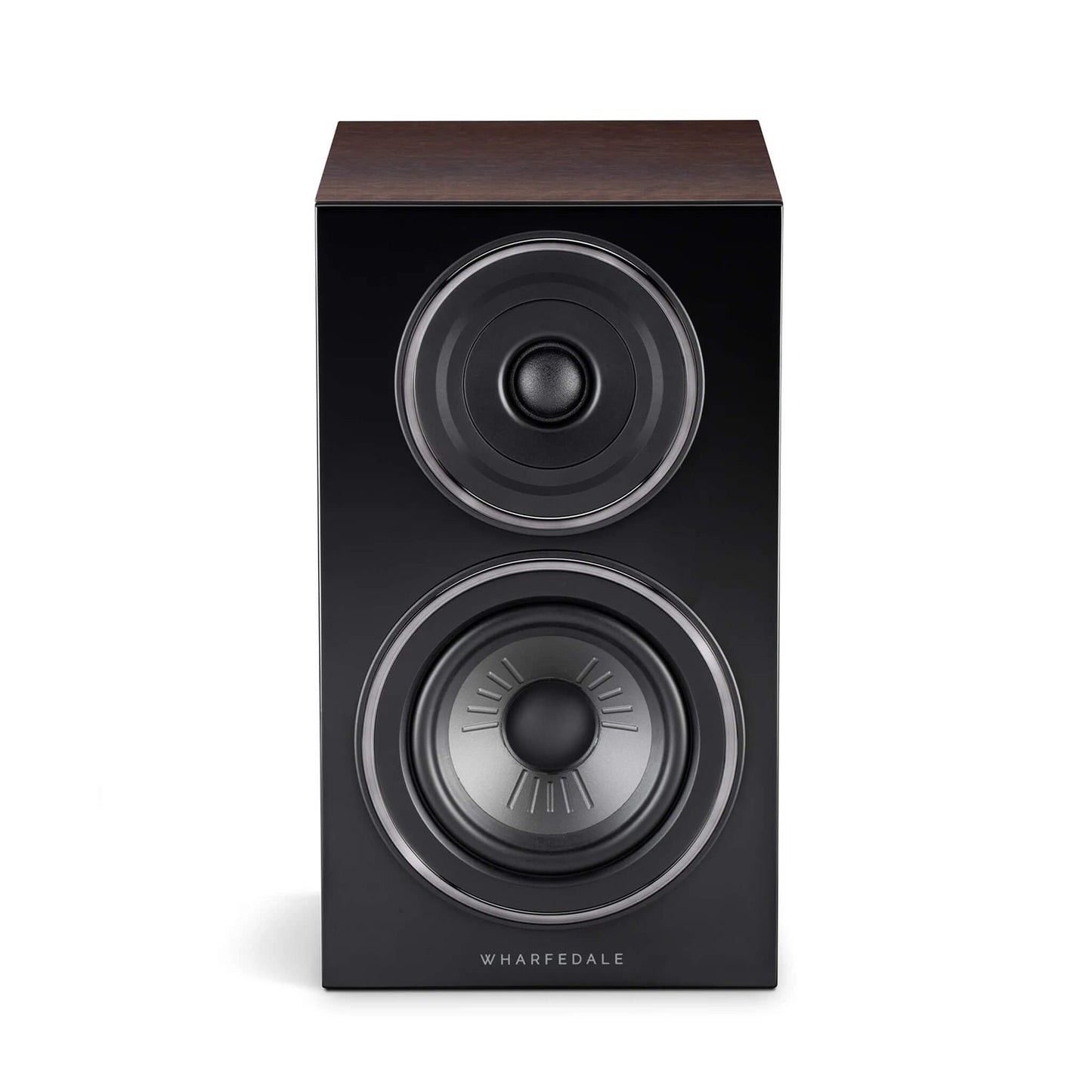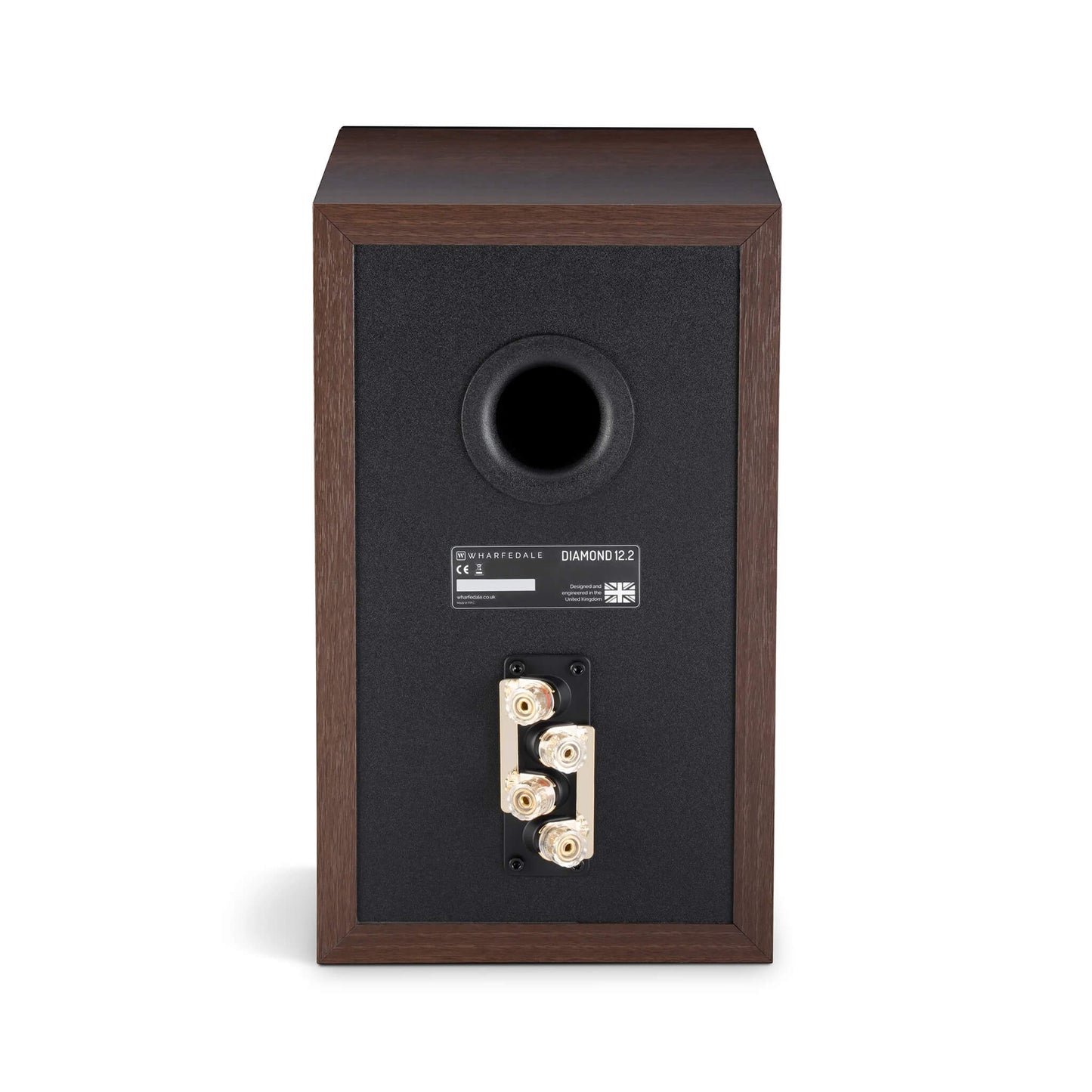Wharfedale - Diamond 12.2 (Walnut)
Wharfedale - Diamond 12.2 (Walnut)
Couldn't load pickup availability
Wharfedale Diamond 12.2 Bookshelf Speakers
Experience the legendary Diamond sound heritage with the Diamond 12.2 bookshelf speakers. Building on over 80 years of Wharfedale expertise, these speakers deliver exceptional performance with refined aesthetics. The Diamond 12.2 combines advanced driver technology with elegant walnut veneer finish for both stunning sound and visual appeal.
✨ Key Features
🎵 Advanced Woven Kevlar Cone Technology
The Diamond 12.2 features a 165mm (6.5") woven Kevlar cone driver that delivers exceptional midrange clarity and bass response. The lightweight yet rigid Kevlar material provides optimal damping characteristics, reducing unwanted resonances while maintaining excellent transient response.
This advanced cone technology ensures natural, uncolored sound reproduction with impressive dynamic range, making every musical detail come alive with remarkable precision and authenticity.
⚡ High-Performance Soft Dome Tweeter
The 25mm (1") soft dome tweeter extends frequency response up to 20kHz with smooth, detailed high-frequency reproduction. The carefully designed tweeter integration ensures seamless crossover transition and wide dispersion characteristics.
Advanced tweeter design minimizes distortion while delivering crisp, airy highs that bring out the subtle nuances in vocals and acoustic instruments with exceptional clarity and presence.
🎯 Precision-Tuned Bass Reflex Design
The carefully engineered rear-ported bass reflex cabinet optimizes low-frequency extension and efficiency. The precisely calculated port tuning enhances bass response while maintaining tight, controlled low-end reproduction.
This sophisticated cabinet design delivers impressive bass depth and impact for a bookshelf speaker, providing full-range performance that belies its compact dimensions.
🎨 Premium Walnut Veneer Finish
The Diamond 12.2 showcases genuine walnut wood veneer with rich grain patterns and warm, natural tones. The high-quality finish combines aesthetic appeal with acoustic benefits, providing a non-resonant, attractive exterior.
Each speaker features carefully matched veneer patterns, ensuring consistent appearance when used as a stereo pair. The timeless walnut finish complements any interior décor style.
🔧 Bi-Wire/Bi-Amp Capability
Features dual binding post terminals that support both bi-wiring and bi-amping configurations. High-quality gold-plated terminals ensure secure connections and optimal signal transfer.
The flexible connection options allow for system upgrades and customization, enabling audiophiles to optimize performance according to their specific amplification and cabling preferences.
🔇 Advanced Cabinet Construction
The rigid MDF cabinet construction incorporates internal bracing and damping materials to minimize unwanted resonances and vibrations. The carefully designed internal volume optimizes driver performance.
Strategic placement of internal damping materials and bracing ensures clean, uncolored sound reproduction by eliminating cabinet-induced colorations and standing waves.
📐 Technical Specifications
2-way bass reflex
165mm (6.5") woven Kevlar cone
25mm (1") soft dome
45Hz - 20kHz (±3dB)
88dB (2.83V/1m)
8 Ohms
3.5 Ohms
25-120 watts
2.2kHz
40Hz
110dB
Bass reflex (rear ported)
Walnut wood veneer
Dual gold-plated terminals
335 × 190 × 315mm
6.8kg each
United Kingdom
5 years manufacturer warranty
🎵 Perfect for: Stereo music systems • Home theater front channels • Near-field monitoring • Bookshelf placement • Stand mounting • Audiophile listening
📧 Contact us at skylabscontact@gmail.com for availability and ordering
Share









